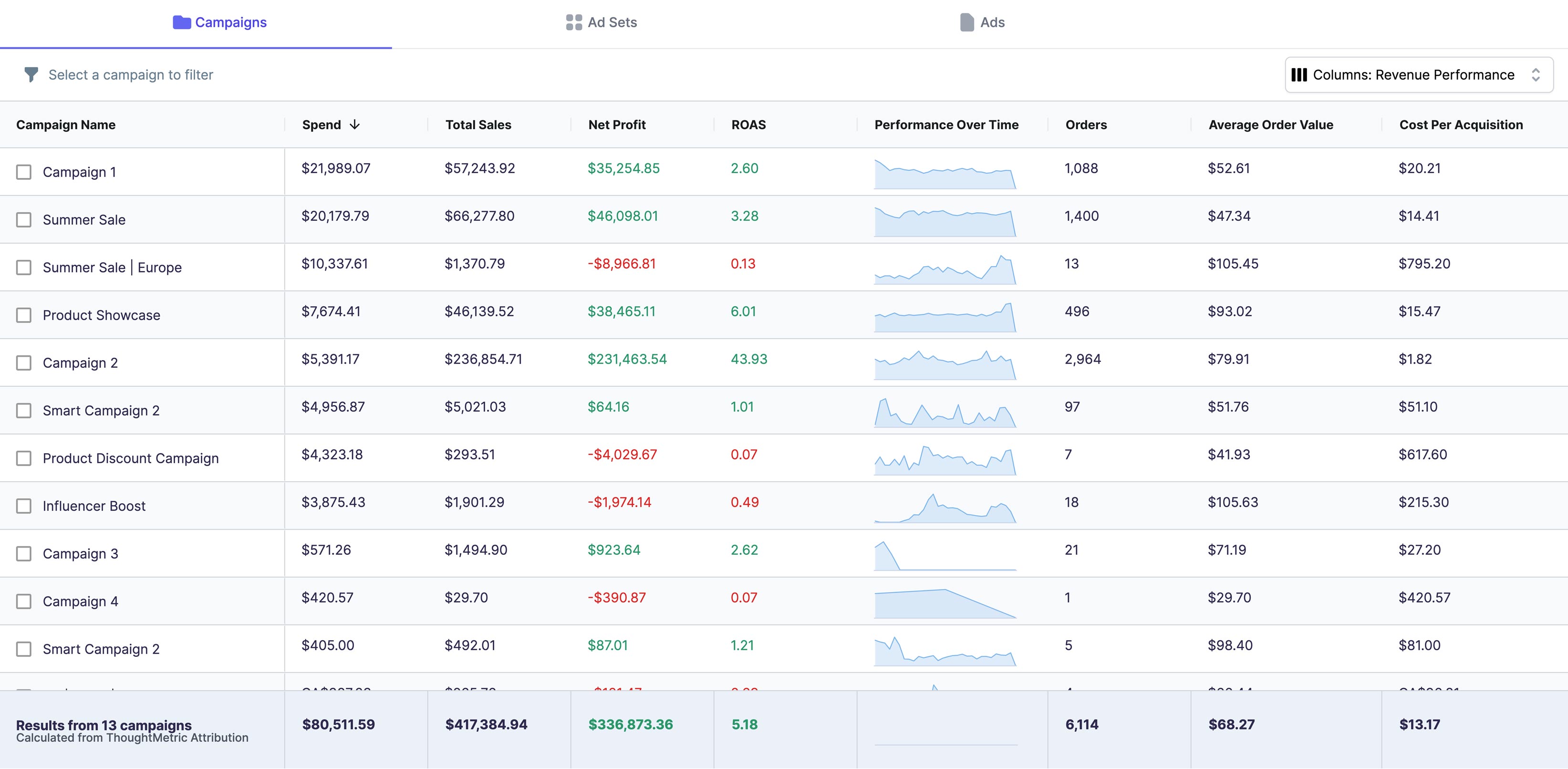Google Analytics is an indispensable tool in helping businesses make data-driven decisions. Among its many features is the ability to track revenue, which is a crucial metric for any business. In this article, we will walk you through the process of calculating revenue in Google Analytics, from setting up ecommerce tracking to advanced revenue analysis techniques.
Understanding Revenue in Google Analytics
Before we dive deeper, let's define what we mean by revenue in Google Analytics. Revenue refers to the total amount of money generated by your website or app, including sales from products and services, shipping charges, and taxes. The revenue data is collected through ecommerce tracking, which requires you to add a code snippet to your website.
Tracking revenue might seem like a no-brainer, but there are several reasons why it's important. First and foremost, revenue tells you how much money your business is making, which is crucial in measuring success. Additionally, revenue data can help you identify which products or services are performing well, which channels are driving the most sales, and which marketing campaigns are most effective. Armed with this information, you can make informed decisions on how to allocate your resources and optimize your marketing strategy.
Importance of Tracking Revenue
Tracking revenue is not only important for measuring success, but it can also help you identify potential issues with your website or app. For example, if you notice a sudden drop in revenue, it could be an indication that there is a technical issue or a problem with your checkout process. By tracking revenue, you can quickly identify and address these issues before they have a significant impact on your bottom line.
Another benefit of tracking revenue is that it allows you to set goals and track your progress towards those goals. For example, if you want to increase your revenue by 10% over the next quarter, you can use your revenue data to track your progress and make adjustments to your marketing strategy as needed.
Key Metrics for Revenue Analysis
When analyzing revenue data, there are several metrics you should focus on. These include:
- Revenue: the total amount of money generated by your website or app.
- Conversion rate: the percentage of website visitors who complete a desired action (e.g., making a purchase)
- Average order value: the average value of each purchase
- Sales by channel: the amount of revenue generated by each marketing channel (e.g. email, social media, paid advertising)
By tracking these metrics over time, you can identify trends and make data-driven decisions to improve your revenue. For example, if you notice that your conversion rate is low, you can focus on improving your website's user experience or optimizing your checkout process to encourage more purchases. Alternatively, if you see that one marketing channel is driving significantly more revenue than others, you can adjust your marketing strategy to focus more on that channel.
Overall, tracking revenue is an essential part of any business's analytics strategy. By understanding your revenue data and using it to make informed decisions, you can improve your bottom line and achieve long-term success.
Setting Up Ecommerce Tracking in Google Analytics
Now that you understand the importance of tracking revenue and the key metrics to focus on, the next step is to set up ecommerce tracking in Google Analytics. Ecommerce tracking is a powerful tool that allows you to track revenue, transactions, and other important metrics related to your online store. By enabling ecommerce tracking in Google Analytics, you'll be able to gain valuable insights into your customers' behavior and make data-driven decisions to improve your online business.
Enabling Ecommerce Tracking
The first step in setting up ecommerce tracking is to enable it in your Google Analytics account. To do this, log in to your account and navigate to the Admin tab. Under the View column, click on Ecommerce Settings. From there, you can turn on Ecommerce and Enhanced Ecommerce Reporting. This will allow Google Analytics to track important ecommerce data such as product impressions, product clicks, and sales data.
Once you've enabled ecommerce tracking, you'll be able to see valuable data in your Google Analytics reports, such as revenue, transactions, and average order value. This data can be used to optimize your online store and improve your marketing efforts.
Adding Ecommerce Tracking Code to Your Website
The next step is to add the ecommerce tracking code snippet to your website. This code is what allows Google Analytics to track important ecommerce data on your site. You can add the code manually or through a plugin or extension if you're using a website builder or content management system like WordPress.
It's important to add the ecommerce tracking code to each page where you want to track sales data. This includes product pages, checkout pages, and order confirmation pages. By adding the code to these pages, you'll be able to track important data such as product revenue, transaction data, and conversion rates.
In addition to adding the ecommerce tracking code, you can also set up goals in Google Analytics to track important actions on your website, such as completing a purchase or signing up for a newsletter. By setting up goals, you'll be able to track how well your website is performing and make data-driven decisions to improve your online business.
Overall, setting up ecommerce tracking in Google Analytics is a crucial step for any online business. By tracking important metrics such as revenue, transactions, and conversion rates, you'll be able to make data-driven decisions to improve your online store and grow your business.
Analyzing Revenue Data in Google Analytics
With ecommerce tracking set up and data flowing into Google Analytics, let's take a look at how to analyze revenue data.
Accessing the Ecommerce Reports
To access the ecommerce reports, navigate to the Conversions tab and select Ecommerce. Here, you'll find several reports such as the Overview, Product, Sales Performance, and Shopping Behavior reports.
Interpreting Revenue Metrics
The Overview report gives you an at-a-glance view of your ecommerce performance, including revenue, conversion rate, and average order value. The Product report shows you which products are performing well and which ones aren't, and the Sales Performance report breaks down your revenue by time period, location, and device. The Shopping Behavior report shows you how users are interacting with your ecommerce site, including how many abandon their cart.
By analyzing these reports over time, you can identify which products are selling well and which channels are driving the most revenue. This information can inform your marketing strategy and help you make data-driven decisions.
Advanced Revenue Analysis Techniques
Once you have the basics down, you can take your revenue analysis to the next level with advanced techniques.
Using Segments for Deeper Insights
Segments allow you to isolate specific groups of users based on demographics, behavior, and other criteria. By segmenting your revenue data, you can get a deeper understanding of how different groups of users interact with your ecommerce site. For example, you can create a segment of users who have made a purchase in the past 30 days and analyze their behavior to identify patterns.
Setting Up Custom Revenue Goals
In addition to tracking revenue from sales, you can also set up custom revenue goals to track revenue from other sources, such as lead generation or affiliate marketing. To set up a custom revenue goal, navigate to the Admin tab and under the View column, click on Goals. From there, you can create a new goal and set a revenue value for each completed action.
By integrating Google Analytics with other marketing tools such as AdWords or Facebook Ads, you can get a more complete view of your marketing performance and tie revenue data directly to your advertising efforts. This can help you optimize your marketing spend and improve your overall revenue.
Troubleshooting Common Issues
Despite your best efforts, you may encounter issues with your revenue data. Here are some common issues and how to solve them:
Inaccurate Revenue Data
If you notice discrepancies between your ecommerce platform and Google Analytics, double-check that you have the ecommerce tracking code installed correctly and that it's firing on all relevant pages. Also make sure that your timezone settings are correct.
Missing Ecommerce Transactions
If you're not seeing all of your ecommerce transactions in Google Analytics, make sure that your checkout process redirects users to a confirmation page that includes the ecommerce tracking code. Also check that your website is not blocking any Google Analytics tracking scripts.
When comparing revenue data between Google Analytics and other platforms such as your ecommerce platform or payment processor, keep in mind that there may be differences in how revenue is calculated. For example, your ecommerce platform may include refunded sales in revenue, while Google Analytics does not. It's important to understand these differences and use consistent metrics when comparing data.
Conclusion
Calculating revenue in Google Analytics is a crucial component of any ecommerce strategy. By tracking revenue data and the key metrics that drive it, businesses can make data-driven decisions that help drive growth and improve their bottom line. With the basics of revenue analysis under your belt, you can take your analysis to the next level with advanced techniques that provide even deeper insights. By troubleshooting common issues and optimizing your ecommerce tracking setup, you can ensure that your revenue data is accurate and actionable.





